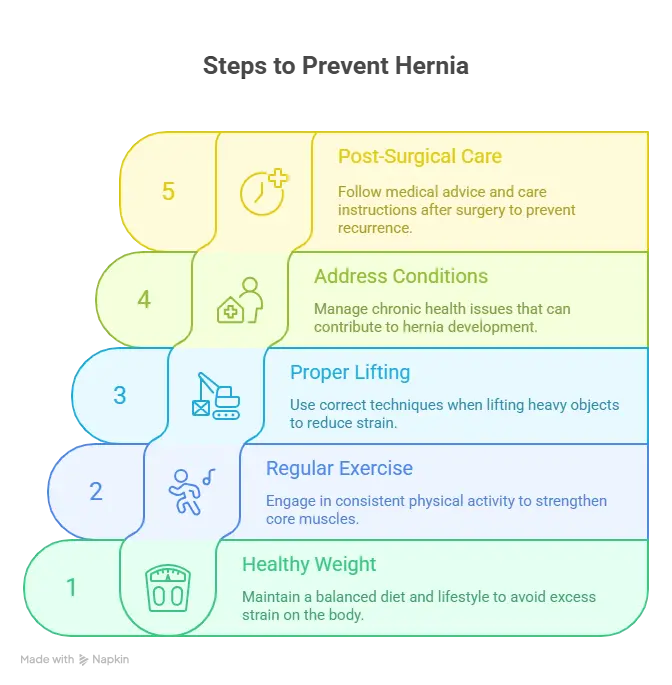As a practising laparoscopic and robotic surgeon in Pune with over fifteen years of experience in treating hernia conditions across Maharashtra, I have observed that hernia in women remains one of the most misunderstood and underdiagnosed conditions in our healthcare system.
Many women suffer in silence, often attributing their symptoms to other gynaecological conditions, which leads to delayed diagnosis and treatment.
Today, I would like to share comprehensive information about the causes of hernia in women, helping you understand this condition better and encouraging timely medical consultation when needed.
A hernia occurs when an internal organ or tissue pushes through a weak spot in the muscle wall that normally contains it. In women, hernias often present differently than in men, making them more challenging to diagnose.
Women tend to have hernias that are deeper in the body and smaller, and therefore less noticeable to the eye, which is why many women experience unexplained pain before receiving a proper diagnosis.
Unlike the obvious bulges commonly seen in men, hernia in women may manifest as chronic pelvic pain, making it crucial for women to be aware of the subtle signs and underlying causes.
Pregnancy stands as the most significant cause of hernia in women in our country. During pregnancy, the growing uterus creates tremendous pressure on the abdominal wall muscles. This pressure, combined with hormonal changes that soften connective tissues, creates ideal conditions for hernia development.
We have treated numerous women from Pune and surrounding areas who developed umbilical hernias during pregnancy. The condition becomes particularly common in women who have had multiple pregnancies, as repeated stretching weakens the abdominal wall progressively.
Chronic cough, whether due to asthma, tuberculosis, or other respiratory ailments, creates repeated pressure spikes in the abdominal cavity. This constant strain can weaken the muscle walls over time, leading to the formation of a hernia.
In my practice, I have noticed that women working in dusty environments or those with untreated respiratory conditions are particularly vulnerable. Seasonal pollution in our cities often exacerbates these conditions, making prevention strategies crucial.
Constipation is unfortunately common among Indian women due to dietary habits, limited physical activity, and cultural factors. Chronic straining during bowel movements repeatedly increases intra-abdominal pressure, gradually weakening the muscle walls.
Women who experience regular constipation should address this condition promptly, not just for comfort but to prevent serious complications like hernia development.
Many women in our society perform physically demanding tasks, ranging from household chores to agricultural work. Improper lifting techniques or lifting weights beyond one’s capacity can cause sudden increases in abdominal pressure, potentially triggering hernia formation.
I often counsel women about proper lifting techniques, emphasising that strength training should be gradual and supervised, especially for those with sedentary lifestyles who suddenly engage in strenuous activities.
As women age, particularly after menopause, their muscle tissue naturally loses strength and elasticity. Several femoral hernias tend to develop in females within the 40- to 60-year age group. This age group is more prone to developing a hernia as the muscles wear off with age.
The hormonal changes during menopause further contribute to tissue weakness, making older women more susceptible to hernia development.
Any previous abdominal surgery creates potential weak points in the abdominal wall. Women who have undergone caesarean sections, appendectomies, or gynaecological procedures have a higher risk of developing incisional hernias at the surgical site.
Post-operative care and gradual return to normal activities are crucial in preventing such complications.
Family history plays a significant role in the development of hernias. Women whose mothers or sisters have had hernias are at higher risk due to inherited tissue characteristics. Some individuals are born with naturally weaker connective tissues, predisposing them to the formation of hernias throughout their lives.
Excess weight creates continuous pressure on the abdominal wall. Additionally, obesity often accompanies other risk factors such as diabetes, poor healing, and reduced physical activity, creating a compound risk for hernia development.
Weight management becomes particularly important for women with other risk factors, as maintaining a healthy weight in conjunction with proper nutrition significantly reduces the risk of hernia.
Femoral hernias more often occur in women, and they may cause invisible, unexplained groin pain. This type of hernia occurs when tissue pushes through the femoral canal, a small space that allows blood vessels to pass from the abdomen to the thigh.
Particularly common during and after pregnancy, umbilical hernias occur when tissue protrudes through a weakness near the belly button. Many women notice this as a small bulge around the navel that becomes more prominent when coughing or straining.
This internal hernia affects the upper part of the stomach, which pushes through the diaphragm. Women often experience symptoms such as heartburn, acid reflux, and chest pain rather than visible bulging.
These develop at the site of previous surgical incisions, particularly common after caesarean sections or other abdominal surgeries.
A woman may experience aching, sharp pains, or a burning sensation at the site of the hernia, along with pain or discomfort that worsens with activity. Unlike men, women may not always notice a visible bulge, making symptom recognition crucial.
Common symptoms include:
Several factors increase the likelihood of hernia development in women:

Immediate medical attention is necessary if you experience:
Immediate medical attention is necessary if you experience:
Understanding the causes of hernia in women is the first step toward prevention and timely treatment. While hernias are common and treatable conditions, early recognition and prompt medical care are crucial for achieving the best outcomes.
If you experience persistent abdominal or groin pain, do not hesitate to consult with a qualified surgeon. Seeking medical help is not a sign of weakness but a responsible step toward maintaining your health and continuing to care for your family effectively.
For women in Pune and surrounding areas experiencing symptoms suggestive of a hernia, I encourage you to schedule a consultation. Early diagnosis and appropriate treatment can prevent complications and ensure you continue to lead an active, comfortable life.